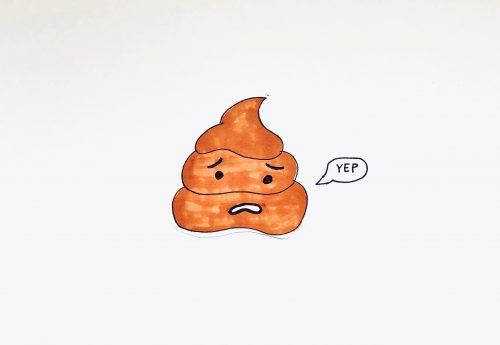
A school age D.H. Lawrence (‘Bert’ at home, ‘Herbert’ at school, David for no-one) is sitting one day next to a neighbour’s child. Both of them are looking across the fields and the remnants of Sherwood Forest lying just north of Eastwood, the coal mining town where Bert lives and where his father works in the colliery.
Turning to his playmate, Bert opens his mouth and these words fall out: “Everywhere is blue and gold.”
There is a pause while the comment blows her mind. “Now you say a line,” he goes.
“Of course I could not,” she admits in an interview many years later.
Bert is considered something of a loner by the other children, a sickly child, preferring the company of girls to boys (‘Dicky Dicky Denches plays with the Wenches,’ the boys jeer at him). But he finds in language a protective ally:
“Those years at home, talking to his mother and listening to her, paid off: a schoolmate remembered ruefully how Lawrence started ‘hittin’ back wi’ his tongue an’ he could get at us wheer it hurt’. His brother George remembered ‘that very sharp tongue’ too: ‘it was as our old dad used to say: “to take the skin off your back”.’ Vituperation was a skill Lawrence developed early, to cope with the world.” (Worthen, 2006)
In a very different city, and a different social class, young Sigmund Freud is beginning his work with Josef Breuer on those human animals who experiences life with an at times debilitating intensity. This will be published a few years later as Studies in Hysteria.
Lawrence’s gimlet-eyed focus would also flower into something intense and hyper-elaborated: a preternatural sensitivity to other human beings and the natural environment, as well as the use of angry, and critical language as a defence mechanism.
Nowadays a psychiatrist might give him, and indeed many creatives, a Borderline Personality Diagnosis, sometimes also referred to as Emotional Intensity Disorder. But at that fin-de-siecle moment in the history of our species, amplified and exalted emotional intensity would still be categorised as a personality trait, perhaps akin to being very “passionate” about a certain cause (poetry for example), or as a religious narrative, or an imbalance of bodily humours.
What strikes me when reading John Worthen’s biography, but especially when reading Lawrence himself is Bert’s pedal-to-the-metal ferocity: the nought-to-sixty acceleration of his writing, and by extension, his inner world.
Intensity: a word that has buried within its origins both a sense of an urgent focal point (Latin intentus an aim, a purpose), but also a desire to extend ourselves and that which we interact with, to become more than just ambulatory meat machines. Intensity as a kind of magnification or elongation of our animal selves, an overreaching of the mundane space that our bodies take up.
**
Exhibit A: this poem, which I recite to myself on an almost daily basis, revelling in the hurricane-like force of its language and rhythms, but still not entirely sure from which direction to come at it, or where it might be coming at me.
SONG OF A MAN WHO HAS COME THROUGH
Not I, not I, but the wind that blows through me!
A fine wind is blowing the new direction of Time.
If only I let it bear me, carry me, if only it carry me!
If only I am sensitive, subtle, oh, delicate, a winged gift!
If only, most lovely of all, I yield myself and am borrowed
By the fine, fine wind that takes its course through the chaos of the world
Like a fine, an exquisite chisel, a wedge-blade inserted;
If only I am keen and hard like the sheer tip of a wedge
Driven by invisible blows,
The rock will split, we shall come at the wonder, we shall find the Hesperides.
Oh, for the wonder that bubbles into my soul,
I would be a good fountain, a good well-head,
Would blur no whisper, spoil no expression.
What is the knocking?
What is the knocking at the door in the night?
It is somebody wants to do us harm.
No, no, it is the three strange angels.
Admit them, admit them
You might decide to stop reading here. Because Lawrence is a marmite writer. You either enjoy and even revel in the ferocious, earnest, salty gusto of David Herbert Lawrence. Or you don’t. If not, you might prefer the cucumber and cream cheese poets of his generation (Lewis, Spender, MacNiece, Frost?) as more palatable existential sandwiches. You might even decide to politely look away when Bert starts huffing and puffing. Most poetry critics in this century now do, responding to Lawrence’s verse like a parent to a child having a temper tantrum: “You’ll need more than hot air to move that, or me, Bert.” If instead you continue reading, it’s probably because the malty, yeasty, umami smear of this poem speaks to your own encounter with the world. It certainly does mine.
**

I am sometimes surprised by the poems I choose to learn by heart. I have come to realise that they often fall into the category of work that is not entirely arcane and unknowable, and yet they often hold within them some deep, tantalising enigma, some koan that pulls me into their world in the same way that one is mysteriously attracted to a certain individual, or painting, or song, but not another. There is a mystery to this attraction, and to the attraction we have to certain poems. But also not, for can the attraction often be explained as a form of identification, the poet speaking for us in ways we can’t?
I think this is very much the case with Lawrence’s “Song of A Man Who Come Through”, which even though I have now recited it hundreds of times, even though it lives within me like the bacteria, archaea, protozoa and fungi that reside within my own body, making up as much as 3% of the entity I refer to as “me”, I still have no clear idea of what it’s really “about”.
What attracted me to the poem though was I think some kind of personal identification with the blazing pulse of the verse, it’s frenetic excitability.
“Not I, not I,” it begins, with that most elemental of iambs: da DUM da DUM. I love the fact that on the Wikipedia page explaining iambic pentameter, you can listen to a human heartbeat as an illustration of this deep, embodied affiliation we have to the most common meter in English poetry.
I equally love the way the almost martial, combative negation of the first four beats disperses into a more open, aerated release following the conjuctive ‘but’: “Not I, not I, but the wind that blows through me!” (da DUM da DUM, dada DUM dada DUM DUM!)
On first hearing those ‘nots’ we might think that Lawrence is setting himself up in opposition to something (being oppositional is very Lawrentian): “Not I for Brexit! Not I for Boris Piccaninny Watermelon Letterbox Cake Bumboys Vampires Haircut Inconclusive-Cocaine-Event Wall-Spaffer Spunk-Burster Fuck-Business Fuck-The-Families Get-Off-My-Fucking-Laptop Turds Johnson (as Stewart Lee memorably full-named Johnson after he connived his way, Richard III-like, into taking on the mantle of Prime Minister). That sort of thing.
Instead, this is an inner battle that Lawrence is exemplifying, perhaps the greatest inner battle we can “fight” as language-making and marking, linguistically-conscious animals. Let’s call this “the battle” that between my-ego/my-self (i.e. that part of me that desires and plots and attempts to manipulate other people and my environment into giving me what I want) versus a more contingent sense of self, here represented by the wind. Wind-carried-self is in the world of this poem everything else (other poems, songs, sunlight, my neighbour’s child wailing on the landing) that “blows through me”, shaping my lived experience and narrative about that experience as it does. But it’s a not-me, or rather not-unless-I-make-it-so (perhaps by learning the poem by heart?). We might call this part of us: the contingent self.
In buddhist literature, this is sometimes referred to as no-self, or non-self, but my understanding of this is that although we see ourselves as separate, self-determined entities, our experience of the world is inextricably, at every moment of the day, shaped and circumscribed by our environment, as well as our life course up to this point. This is the context in which we live and are “made”: the weather, the words we read or listen to, the people who populate our existence, and a million other factors that are not even a conscious part of our awareness. It’s not necessarily more more complicated than that.
In Robert Hass’s poem, Measure, Hass catches a glimpse of himself, which seems to stand for an almost phenomenological signature of his life, not in the denizens of his environment (a plum tree, sunlight, a mountain, his writing desk), but in “the pulse / that forms these lines”. Similarly, we find Lawrence embodied in the pulse of this poem, and it’s a ferocious embodiment, an intense life-sucking or broadcasting phenomenon, a yearning, an insistent, ecstatic, turbulent, hopeful, alarmed, importunate Lawrentian pulse.
**
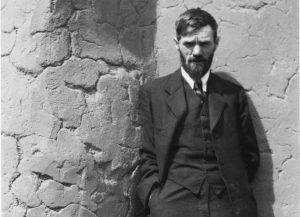
I start reading a feted biography of Lawrence to experience some of that intensity, and there are glimpses of that therein, but of course to really “be inside” DH Lawrence, one needs to read him. You get that intensity in spades as soon as you enter this poem, or read a few pages of his prose.
To give you a sense of the prose outside that of the novels, let’s turn to Exhibit B, an essay from the vast opus of Lawrentian excitability: “Reflections on the Death of a Porcupine”.
This starts as a piquantly observed and participative portrait of a neighbourhood porcupine, words wedged as is often the case with Lawrence into the pungent, clammy cleft of love-and-hate (“He slithered podgily down again, and waddled away with the same bestial, stupid motion of that white-spiky repulsive spoon-tail….He was repugnant.”). It then transmutes into another deeply conflicted (compassion vs. frustration? care vs. rage?) report of his attempt to remove porcupine quills from the muzzle of a neighbour’s dog, which thereafter hardens into the resolve to chastisingly kill one of those local porcupines, with all the mixed feelings that follow the murder.
In the hands of any other writer, here the essay might wind to a close. But not for Lawrence. This is only 1/5th of the way into a 6000 word essay. He still has in store for us a wonderful cat-chase-chipmunk tale summation of evolutionary pecking orders (“Life moves in circles of power and of vividness, and each circle of life only maintains its orbit upon the subjection of some lower circle. If the lower cycles of life are not mastered, there can be no higher cycle.”), as well as a kind of metaphysics of vivacity (“The ant is more vividly alive than the pine-tree. We know it, there is no trying to refute it.”)
And before you know it, he’s taken us into “the fourth dimension, of being” (!) spelt out in five inexorable laws, followed by an ecstatic, extended grappling and grasping through language, much as I am perhaps doing here, often veering off into a kind of literary version of speaking in tongues, where he tries to pull us into the very nucleus of his intense vision. The short, representational or figurative paragraphs early on in the essay extend and amplify into long, flowing shudders and judders of mystical poesis, similar in energy to the above poem.
We start reading his essay in a place we might recognise as prose, in which meaningful and somewhat measured (for Lawrence) points about the natural world and our response to it are made, but like a rocketship passing swiftly through the lower layers of the stratosphere only to emerge into the cosmos, we are soon blasted along by his fervour into imaginings which all at once slice the tops of our heads off and plunge us into the very yolk of our animate and animal existence, the very existential glue that binds us to every other life form.
We are now in that Lawrentian realm of blood-consciousness, which is to say ““an organic, bodily intentionality that operates outside the realm of intellect, cognition, or mental consciousness and outside of the self-reflective, self-conscious object”.
Ulrike Maud in her essay on Lawrence and Merleau Ponty, shows us how Lawrence’s notion of the unconscious was different to Freud’s in being a bodily modality rather than an attribute of the mind. And perhaps when one lives in a body that from a very young age functions only intermittently, the life of the mind will invariably take anchor in the flesh rather than in the purely abstract realm of language. Although for Lawrence I think it pendulates between the two, as it does for most of us.
“My great religion is a belief in the blood,” he writes in a letter to Ernest Collings, “the flesh, as being wiser than the intellect. We can go wrong in our minds. But what our blood feels and believes and says, is always true. The intellect is only a bit and a bridle.”
Song of A Man Who Has Come Through is a clarion call for this kind of embodied thinking. All the sensations, all the content of the poem (the chisel-like winds of change, the rock-splitting and bubbling-up wonder, the knocking of anxiety), are experienced in the body, or rather the natural-world in which the body resonates as just one element, even though it is the mind chronicling the phenomena of consciousness.
“Before thought takes place, before the brain is awake in the small infant, the body is awake and alive, and in the body the great nerve centres are active, active both in knowing and in asserting. This knowledge is not mental, it is what we may call first-consciousness. Now our first consciousness is seated, not in the brain, but in the great nerve centres of the breast and the bowels, the cardiac plexus and the solar plexus. Here life first seethes into active impulse and consciousness, the mental understanding comes later.”
Although this was written in a 1919 essay on Hector Saint John de Crèvecoeur in The English Review, it might happily sit in a 2019 Neuroscience journal (presented in slightly different language) under the title The biological and psychological basis of neuroticism. For to read the latter, which I do, is to recognise the shared quest between Lawrence and the neuropsychologists or psychoananalysts to understand the embodied, inner chaos of our emotional lives that Lawrence writes about again and again
**

Another word for intensity is overexcitablity, with its associations of children getting carried away with an idea or an emotion, or my canine companion Max with a stick. To say that someone is “intense” is maybe the more mature/adult (?) version of saying that a child is “overexcitable”, or to put it in our current medicalised parenting parlance: ADHD. We see this in a child who can’t sleep the night before Christmas due to overexcitability, or gets carried away by a game to the extent of hurting or frightening other children away. An adult on a dating app responds to another person’s humdrum questions with long, encumbered screeds because s/he is “intense”, and equally scares them away. The “problem” of intensity is as much about behaviour that falls short of socially established norms, behaviour that works in a dramatic frame (films, songs, books) but is sometimes too ornamental for prosaic living. Those who are considered to be attractively intense-but also worryingly or wearily de trop at times- in their responses are often the outliers, falling short of standard narratives of what it means to be or perform “human”. In nature, we often call this supererogatory quality a weed.
Some weeds, the bindweed that is taking over my garden at present, have incredibly beautiful flowers and foliage, but are just too damn intense. Bindweed wants to write itself into every flowerbed, but I don’t want it everywhere. I sometimes get this feeling when reading Lawrence, also Whitman. Their deftness with language makes them delicious in small quantities, but we soon tire of their intensity.
When we bring in a century of psychological scrutiny to this state, we find many terms accompanied by capitalised acronyms, most of them denoting the diagnostic equivalent of “Houston, we have a problem” but with no indication of an etiology or prognosis. There’s classic neuroticism for example (N), which morphs mid-century into borderline personality disorder (BPD), and later in a bid to destigmatise the implicit censure of the label Emotionally Unstable Personality Disorder (EUPD), or Emotional Intensity Disorder (EID).
Even less harsh sounding versions of these terms now exist: Elaine Aron’s Highly Sensitive Person (HSP), and Dabrowski’s “Tragic Gift” of Overexcitability. But all still boils down to pretty much the same thing: a human organism that feels things (emotions, thoughts, its own perceptions) very very intensely, which at times can almost feel too much for the container of that body-mind to hold. And when it spills out, it is usually too much for others to hold too.
**

I remember at University sometimes being so excited by the potential of reading and writing that I might not even be able to sit down and focus on actually reading something (anything!) and writing something (anything!). We usually had a week to do all our reading for a particular topic and then submit an essay for the following week’s tutorial. We were very rarely given an essay title. More often than not, it was just: “Next week, Dickens. Go!” I would head off with intense excitement to the library and start checking out primary and secondary sources, my head spinning with possibilities and potential. So many possibilities, so much excitement. It was wearying. No wonder I burnt myself out pretty quickly. And this was in relation to by-and-large positive stimuli. Usually when we pathologise intensity, we focus on negative reactivity which is where most intense people come a cropper, but also become conscious of having a “problem”. But I think it’s important to highlight that intensity in any realm is something of a mixed blessing.
Excitability and Intensity, like all personality traits, represent a continuum, which is often represented as a normally distributed bell curve. Most people lie somewhere in the middle of this. Lawrence, as do many other writers and artists, would probably fall on the downward slope where intensity can become unworkable at times in how it manifests in our lives. But Intensity (or Neuroticism) is only one of five key traits recognised by psychologists, and understandably, how we “score” on other traits will affect our overall engagement with our environment. Someone who is very intense, but also conscientious and agreeable, may have an easier time fitting into society than someone who is intense but scores low on pro-social traits like Agreeableness, Conscientiousness, and Extraversion. Worthen’s biography shows that Lawrence has enough of these other traits to balance his neuroticism.
**
In Song Of A Man Who Has Come Through, we see Lawrence, as with most people who recognise their intensity as signalling and singling themselves out at as personae non gratae, trying on different modes in an attempt to find a more comfortable or amenable way of existing in the world. These are the if-onlys of the poem, pointing to ways in which the speaker recognises his falling short of socially-established and rewarded norms, and techniques. The vision here is one that wouldn’t be out of place in a modern mindfulness class:
If only I let it bear me, carry me, if only it carry me!
If only I am sensitive, subtle, oh, delicate, a winged gift!
If only, most lovely of all, I yield myself and am borrowed
By the fine, fine wind that takes its course through the chaos of the world
Children who are deemed problematic due to their intensity and overexcitability are often encouraged or goaded into towing the line through sticks or “prizes” (the naughty step) and carrots (rewards for being “good”).
There are three “prizes” envisaged in this poem:
1/ something which is challenging to us gets resolved (the rock splits);
2/ we find transcendent meaning and purpose for our lives (we shall come at the wonder)
3/ we get to experience immense peace and pleasure (finding the Hesperides).
The Hesperides is a stand-in here for the good life, eudaimonia, or happiness, the Greek version of The Garden of Eden, with similarly tempting apples. Golden apples, guarded by a dragon (Ladon) who doesn’t require any sleep to function. Hesperides is a place, like heaven, like any of our idealised versions of happiness, which lie beyond the reach of us human animals, a place where we dream about the lives we might have lived, or the people we might be, if we were not so frustratingly living as the people we are. These are also spaces where, as the chorus members of Euripides’ Hippolytus tell us, the Blessed live. In “happiness” of course, feeding upon ambrosia. Or as David Byrne memorably sang: “Everyone is trying to get into the bar. The name of the bar is called heaven.” And even though nothing ever happens in heaven, or the hesperides other than one’s favourite band playing one’s favourite song over and over again, this doesn’t seem to dissuade us.
Heracles was set the task by Eurystheus of stealing some of these apples. We are all, in different ways, trying to steal the apples of happiness. In the Freudian worldview, the golden apples of peace and happiness are only stolen or temporarily savoured in our ordinary human unhappiness via a series of short cuts or “techniques”. But the apples don’t turn us into angels, or our lives into heaven.
Interestingly, this apple-scrumping task was Heracles’ eleventh labour. It was given to him by Eurystheus in addition to the initial ten as it was deemed he cut corners of the others. Even here, the acquiring of the apples involved a ruse: tricking Atlas into doing the job for him while Heracles held up the heavens for a while.
Attic pottery often shows a happy Heracles sitting in the garden attended by the maidens. Perhaps, befitting myths written by men, the virginal Hesperides share some mythological resonance with Islamic houris, those almond-eyed, but “modest gazing” maidens who await the faithful male follower of Mohammed in heaven as a reward for carrying out their religious duties on earth. Heracles is not shown having sex with the maidens though. Perhaps because, returning to that David Byrne song (but also thinking about our own cultural moment where virtual sex is now available 24/7) the tropes of happiness are more about accessing pleasure than a narrative about transfiguration:
Heaven is a place
A place where nothing
Nothing ever happens
When this kiss is over
It will start again
It will not be any different
It will be exactly the same
It’s hard to imagine
That nothing at all
Could be so exciting
Could be this much fun.
*

Post-Eysenck we now know that intensity/overexcitability reflects excessive physiological responsiveness (or arousability) of certain brain systems, especially the amygdala, and how it responds to negative or threatening stimuli (that knocking on the door). Again and again, we find in academic papers about emotional reactivity, glimpses of Lawrence, but also of all us neurotics: the exquisite, but at times damning sensitivity of physiological processes (blood consciousness) leading to negative emotion. But equally, and relevant to this poem: information-processing routines (aka mental perceptions) that assign “codes” for threat to certain kinds of triggers, as well as a greater likelihood to experience self-perceptions “characterized by themes of personal inadequacy and insecurity…and social fears such as being criticized or rejected”.
This is all very well and good, but having ever more refined psychosociobiological descriptors for our neurotic states, still leaves us, like Lawrence, exercised by the various “winds” (thoughts, emotions, bodily sensations) that blow through us. Other than drugs to mute our intense selves, or psychological strategies, also known as emotion regulation strategies, which add all sorts of knobs and buttons to our inner amplifiers (many of them impressive to look at, but hardly ever used), what to do if you too experience very intense feelings and reactions to those feelings?
My suggestion would be to learn this poem, and then recite it when you’re feeling tossed about by life, because Lawrence’s injunction in the final verse is still one that underpins any and every helpful psychological therapy currently known to us. Which is that the mind is designed to avoid, fix, or control the winds of change, as well as our at-times overwhelming wonder and anxiety at being contingent human animals in a world that encompasses, but also challenges us. Avoiding, fixing and controlling, quite often do the job. But for certain times and states, they don’t work. Instead we might choose in an extremely counter-intuitive fashion, to at times open ourselves to and “admit” those things which every cell of our being wants to close the door on.
Dabrowski has a wonderful term for this process: positive disintegration.
Overexcitability is a temperamental quality (a tragic gift he would call it) possessed by individuals which enables them to experience life at a deeper level. There are five of these “gifts”: sensual overexcitability, psychomotor, imaginational, intellectual, and emotional.
Endowed with these gifts, an individual reacts much more profoundly to a great number of stimuli, but with mixed results. Experience affects these individuals significantly more and often to a much greater depth. Someone who doesn’t have this quality, might read a poem, smile and go about their day. Another might read it, and feel compelled to write or talk about it. This is great when it comes to essays on the internet, but sometimes can wrongfoot us or others.
The key it seems, as much as anything else, is finding personal meaning in meaningless suffering. As Marjorie M. Kaminski Battaglia explains: the concept of expiative suffering is essential to Dabrowski’s theory of positive disintegration. “Dabrowski appreciates and attaches value to human suffering and crisis. Instead of suffering viewed as a meaningless burden (Why me?), it becomes an opportunity for an individual to develop and grow. Suffering offers the chance to choose to become.”

Expiation. This is most certainy a poem about expiation: as in EX (out of, from within, think of the word “exhale”) + piare (propitiate, appease).
The word in its current usage appears to date back to the Late 16th century where it was used to signify a kind of ending (of rage, sorrow, or some other unsettling emotions) by feeling into that emotion (suffering it mindfully in attempt to appease the emotional “gods” within). Or as Dan Savage often memorably puts it: allowing ourselves to “feel the fuck out of our feelings”, but without becoming enslaved to them. There is an art to this, as well as a skill. Is this not the art or skill all of us intense folk are working with at any given time? I think it is.
But consider also another etymological link to expiation: ‘to appease by sacrifice’. The sacrafice here being perhaps our own rigid and inflexible notions and reactions to what’s going on inside us, or around us, which Lawrence challenges himself and us to make space for.
**

What is the knocking? What is the knocking at the door of our sensitive nervous systems in response to a trigger? If it is somebody/something wanting to do us harm, let us protect ourselves. But more often than not, the harm we perceive is a phantasm or projection of our intensely imaginative minds.
I used to think that the three strange angels referred to at the end of the poems was another reference to the nymphs in the garden, but I’ve discovered that it may also be a biblical allusion from Genesis 18-19 where God and two angels appear to Abraham announcing that they’re going to decimate Sodom. Two of them (Lawrence makes it three) go on to Sodom to lead Lot and his family out of the city before its destruction.
Sometimes, when we get overexcited by a thought or an emotion, it might function like those three angels bearing some news we really do need to take on board and “do something” about.
-We are destroying our planet!
-This relationship/friendship is no longer working for you!
-You are bored with your job and need to find something more meaningful to do with the rest of your life.
Those messages are always worth taking heed of.
But more often than not, our overexcitable stories probably shouldn’t be acted on. Instead, hard as this may be at times (or even always), we might choose to sit or walk quietly for a few minutes, just breathing and feeling into our wounded selves, admitting (literally: giving entrance, allowing to enter; but also metaphorically admitting) our own uninvited guests.
Which might take us to another poem about (literally) making room for uncomfortable feelings: Rumi’s Guest House.
 This old chestnut, right?
This old chestnut, right?










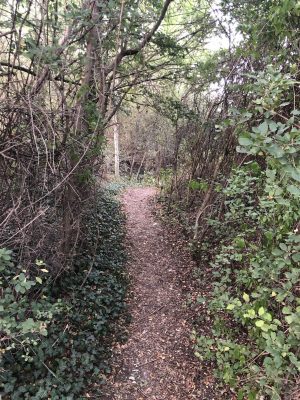
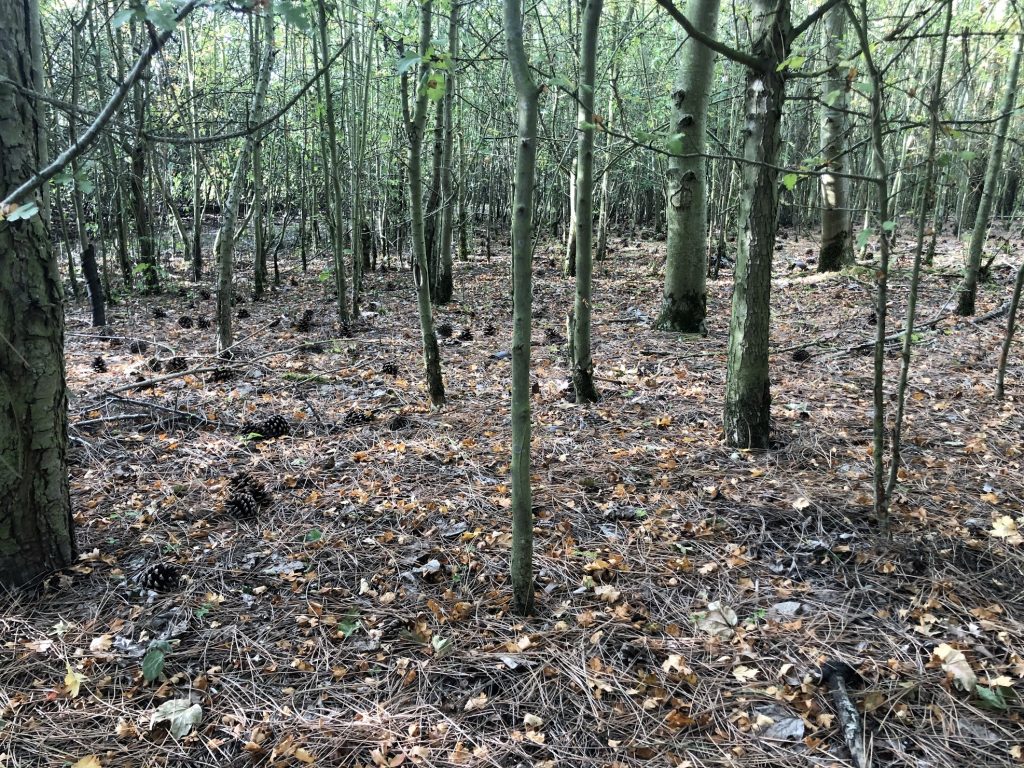
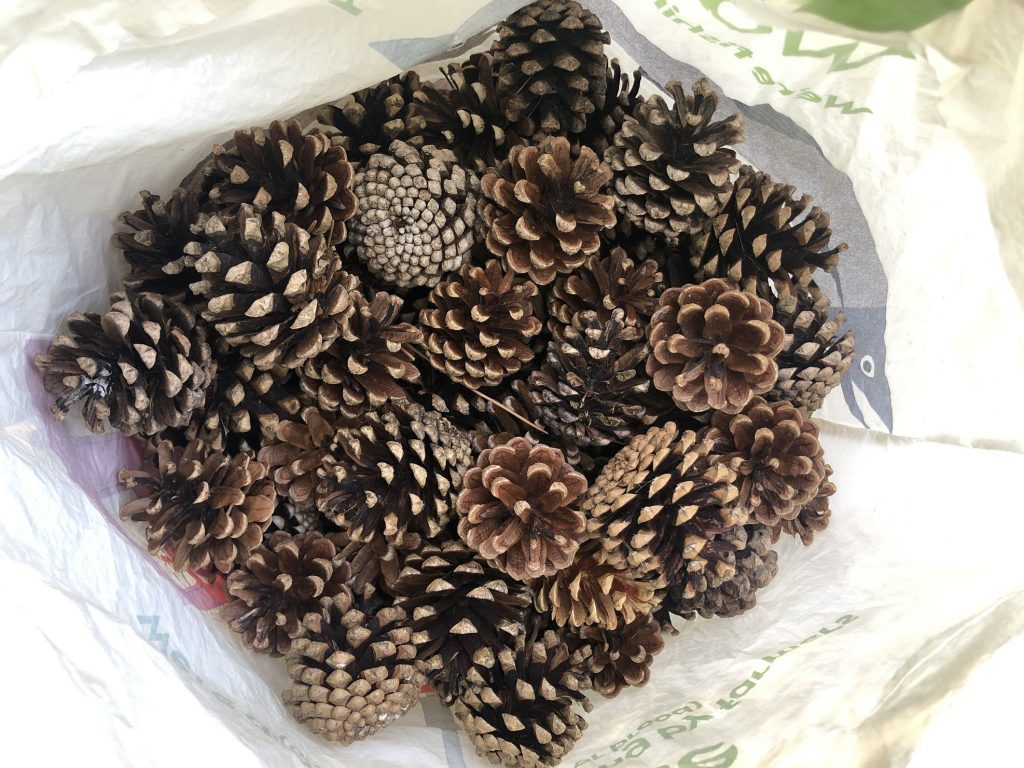

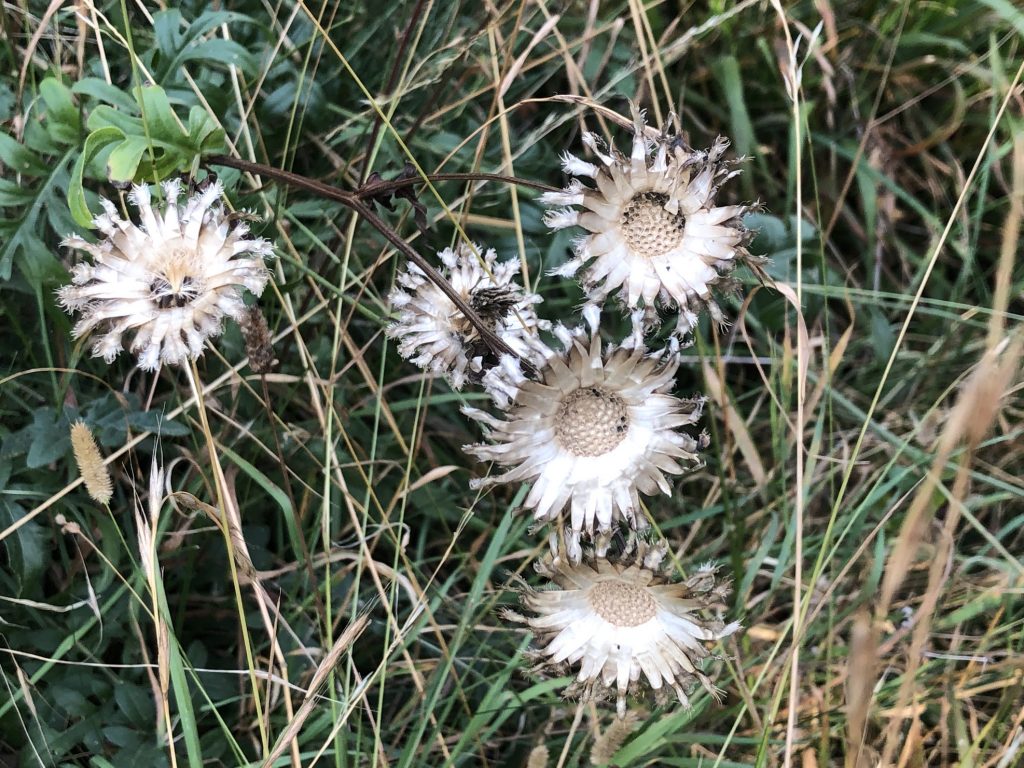
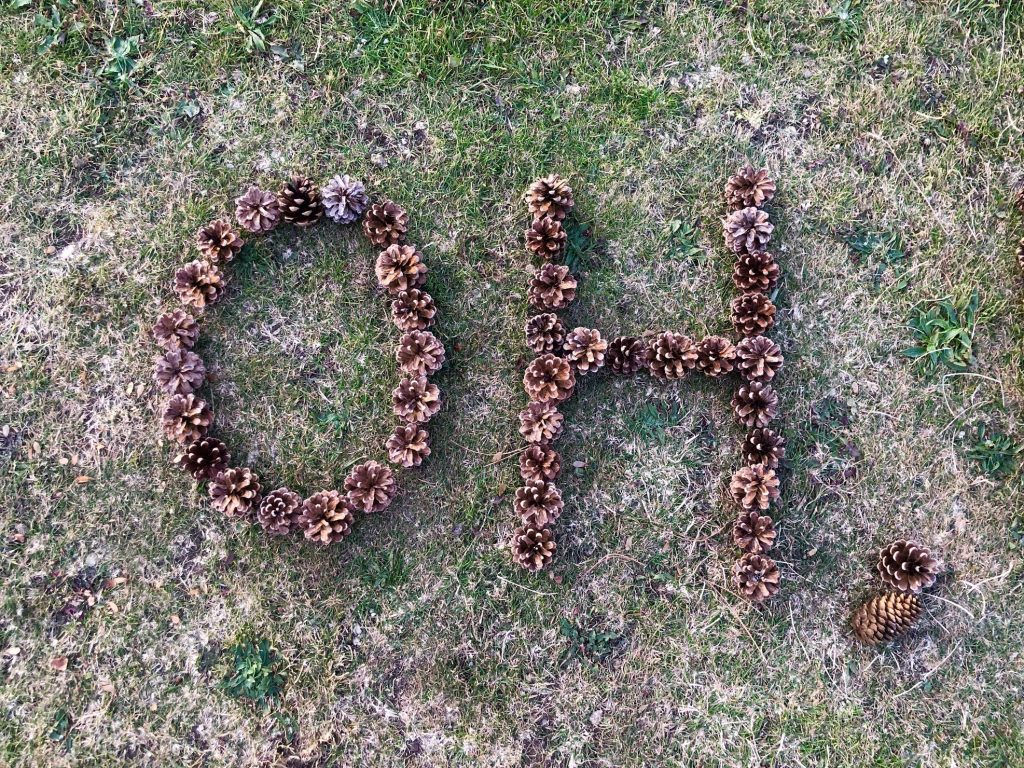
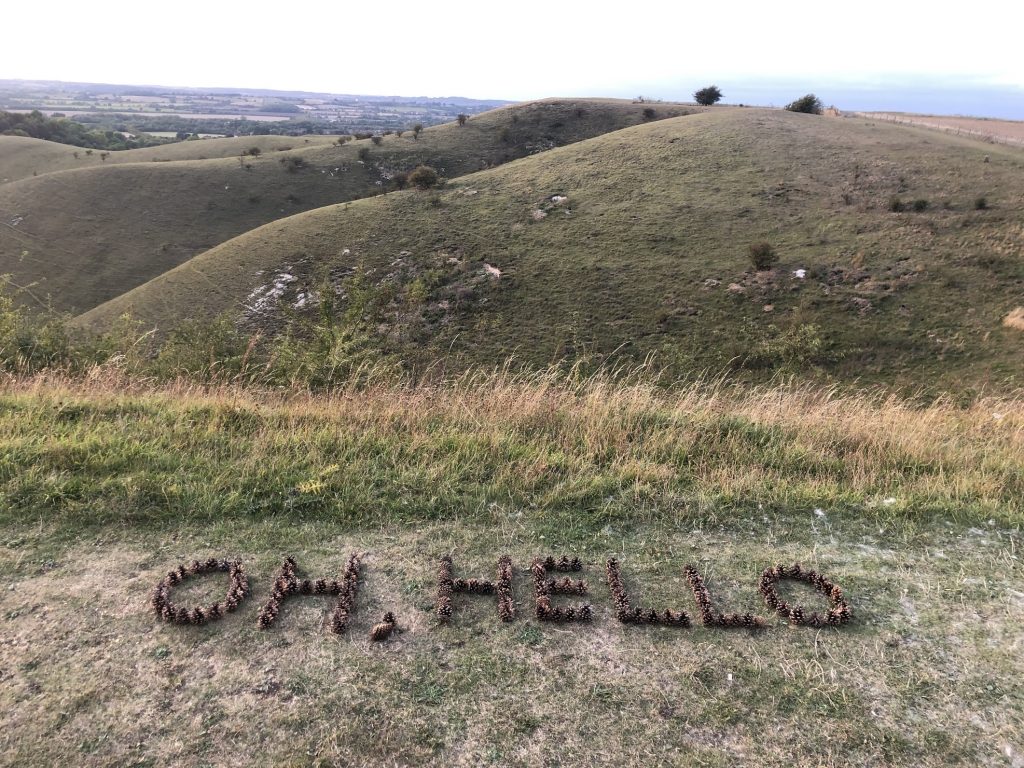






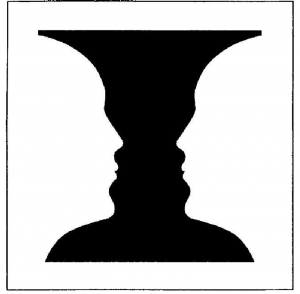

 There are now a squillion books out there about mindfulness and I am tired of reading them, and even tired of the word itself.
There are now a squillion books out there about mindfulness and I am tired of reading them, and even tired of the word itself.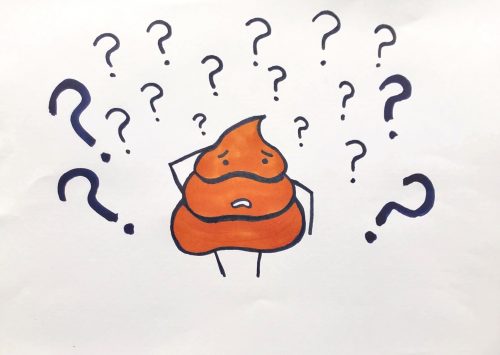

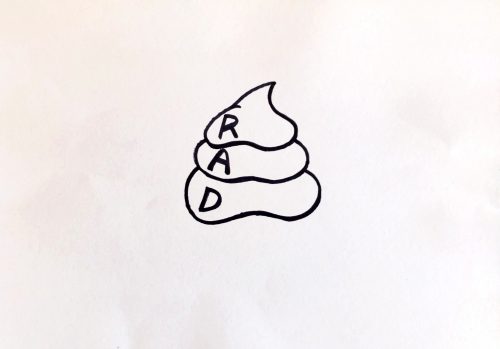
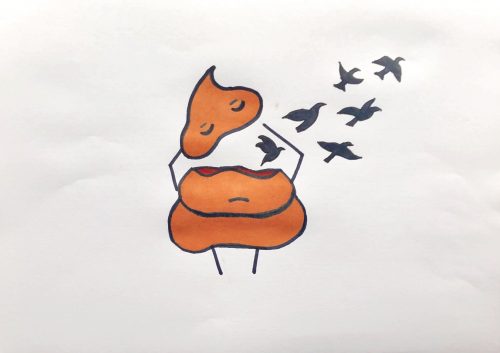
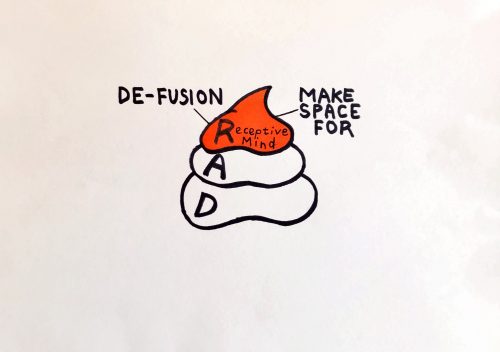
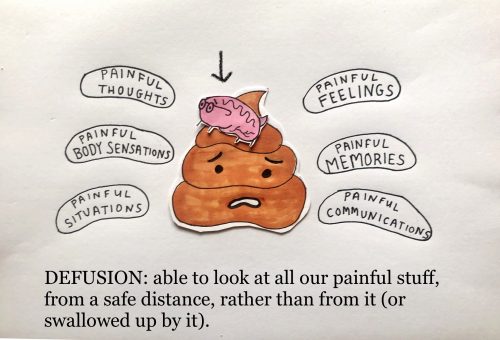
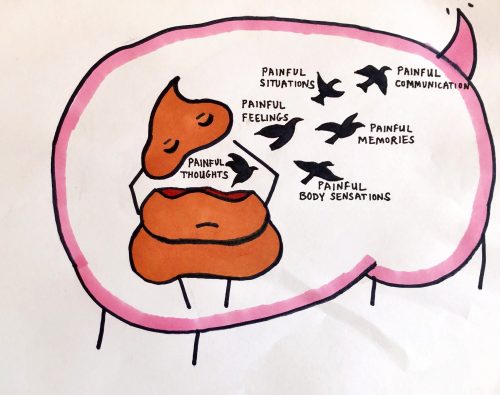
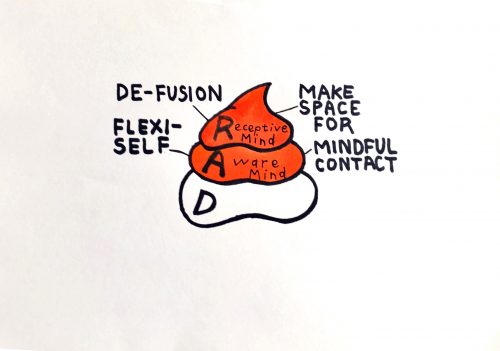
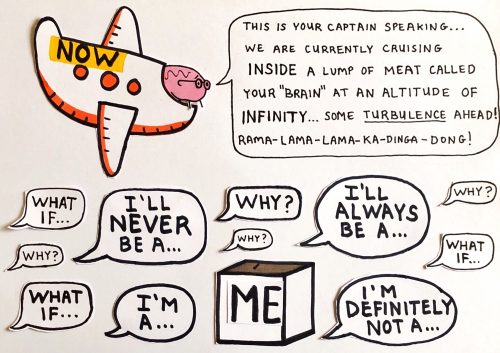
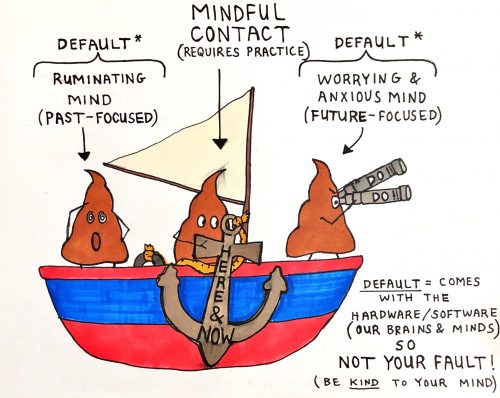
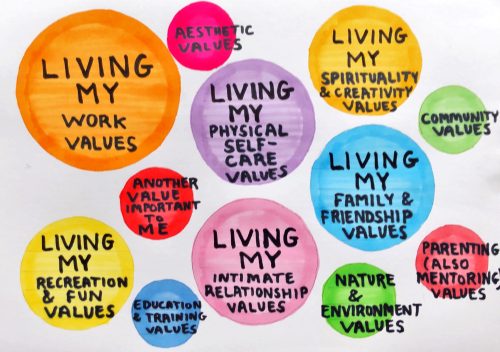
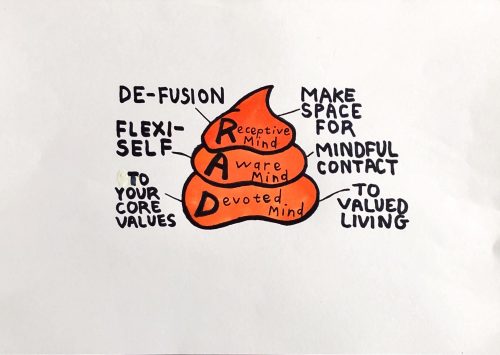
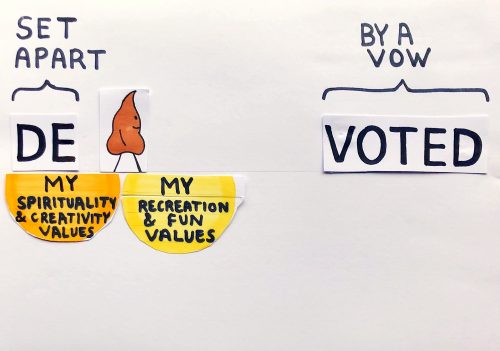
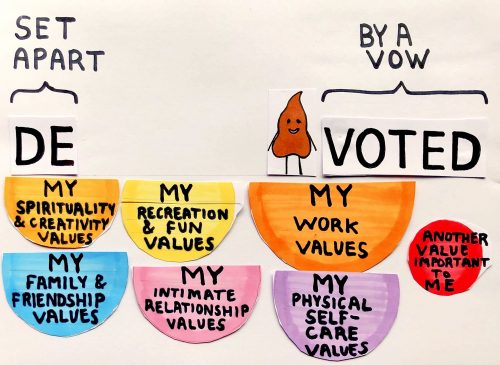
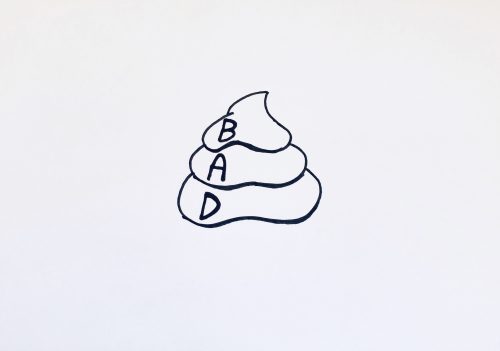
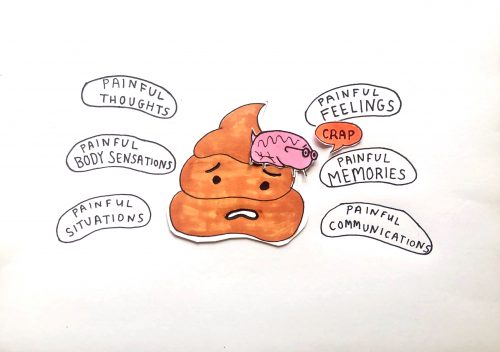
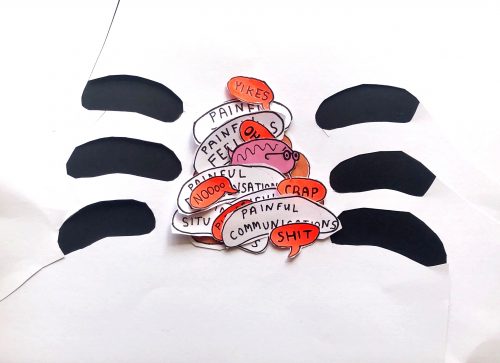
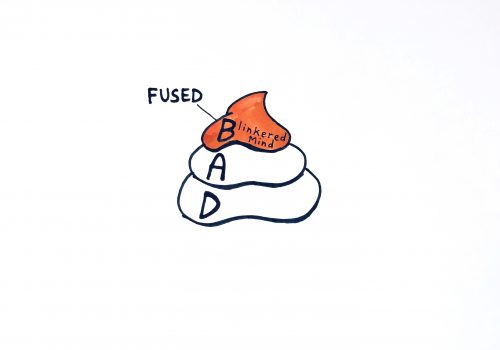 Also, because pain in any shape or form is so uh painful, our suffering Blinkered Minds will often try to avoid this pain in a very intuitive way.
Also, because pain in any shape or form is so uh painful, our suffering Blinkered Minds will often try to avoid this pain in a very intuitive way.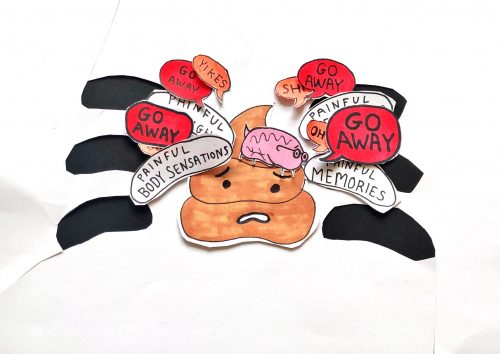
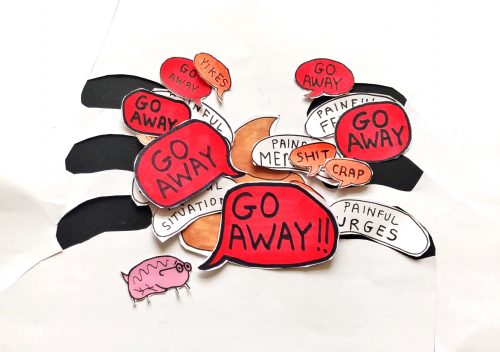
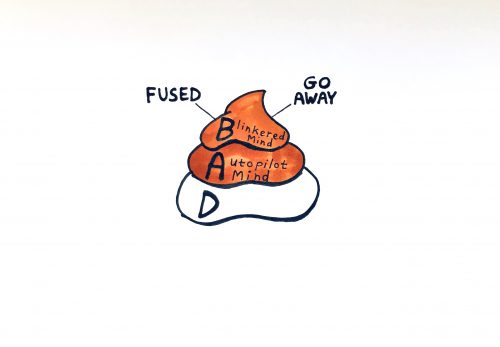
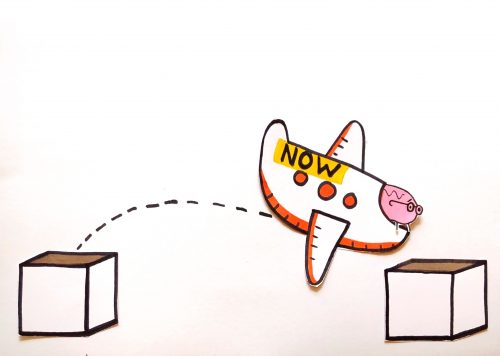
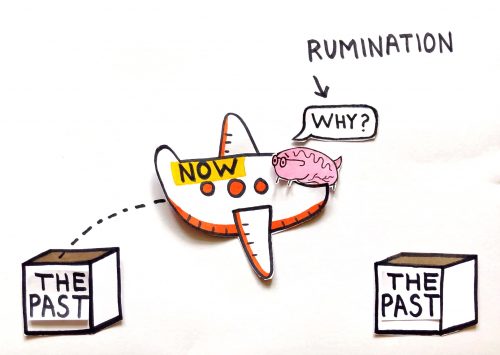
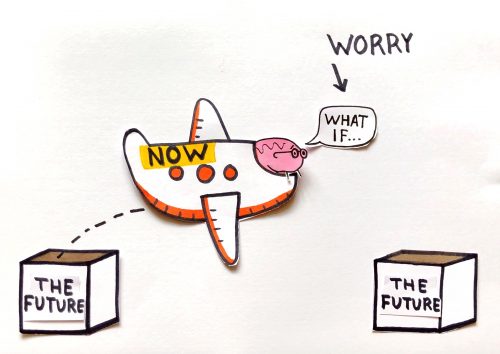
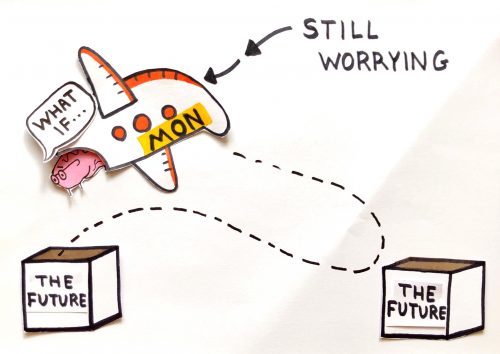
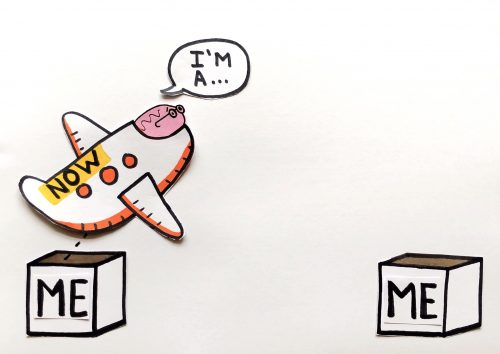
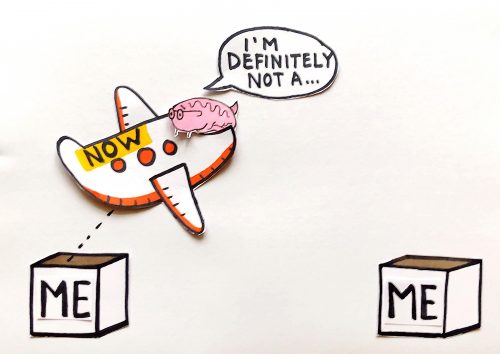
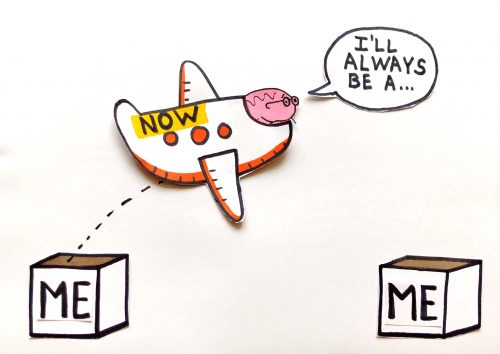
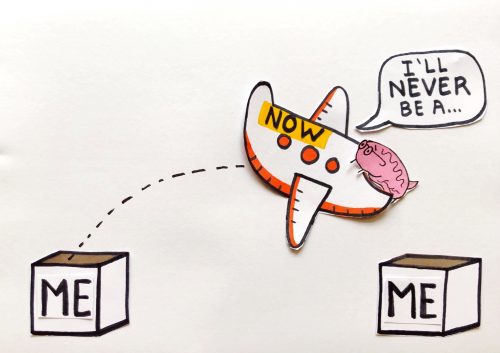
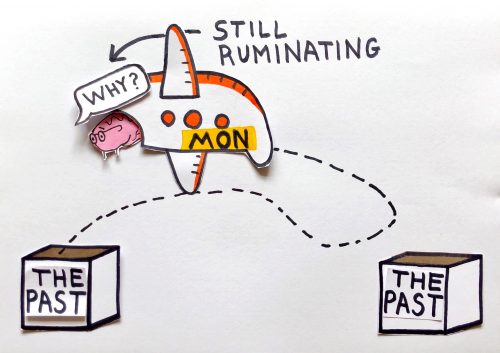
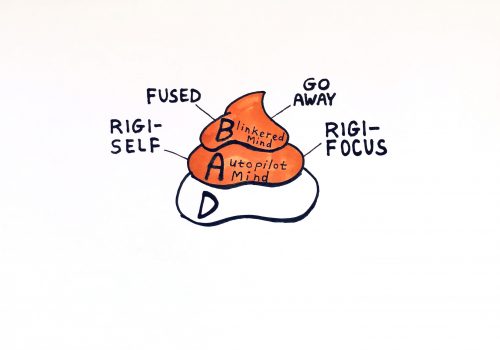
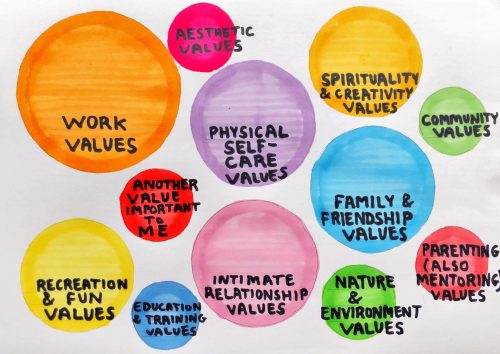
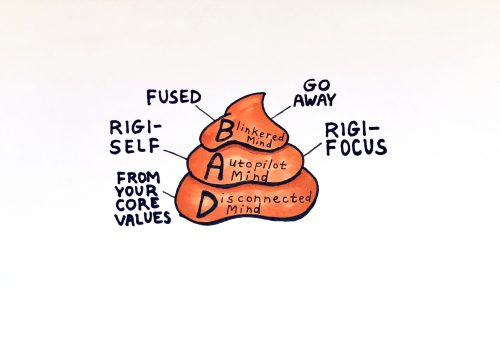
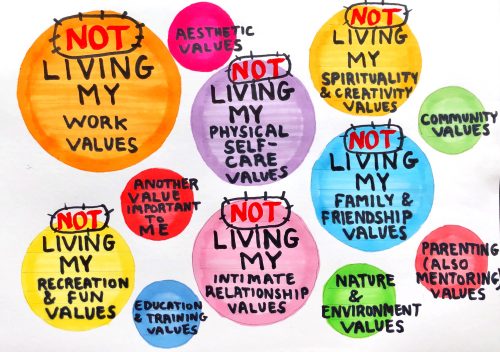
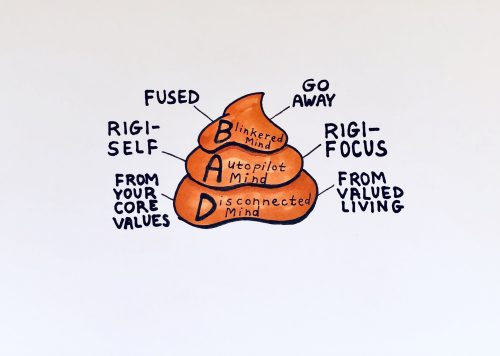
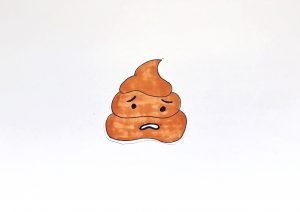
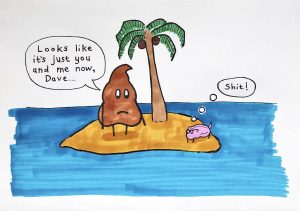
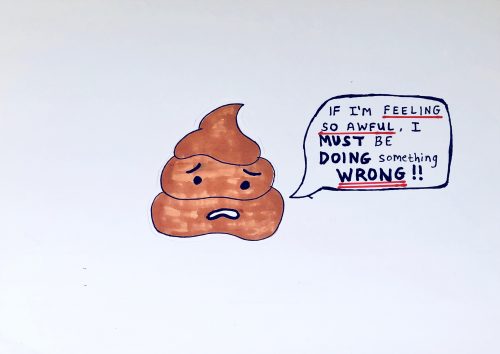
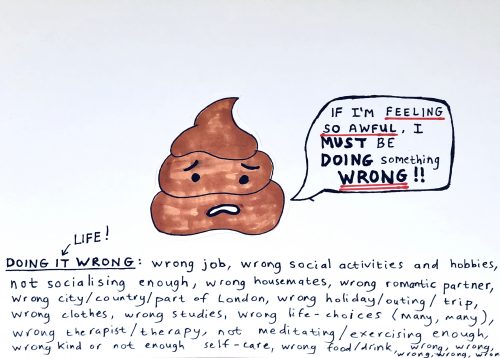
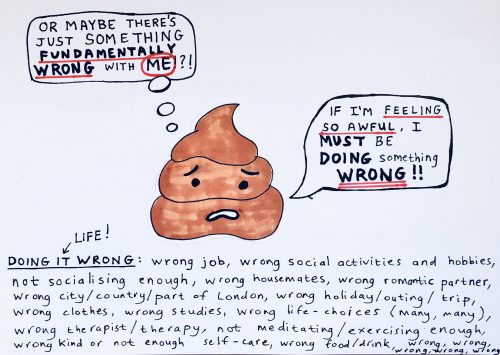
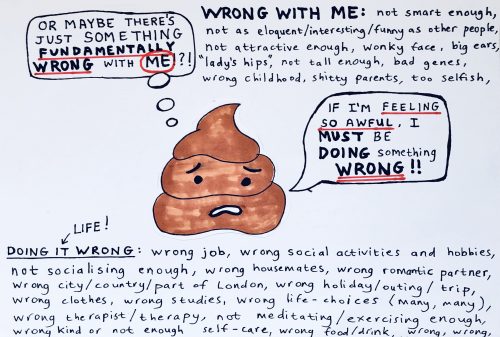



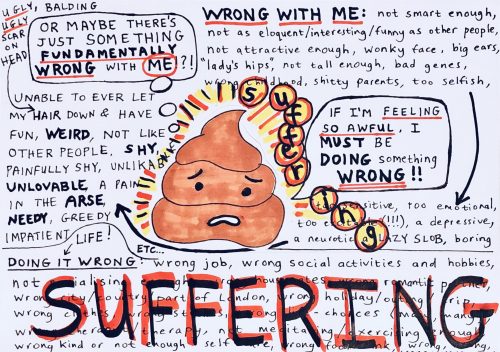
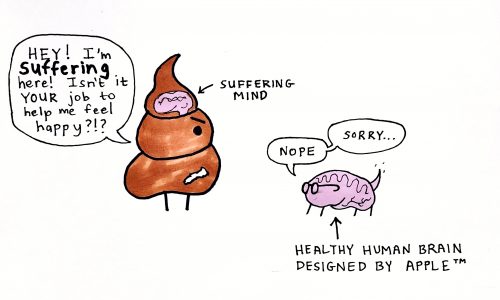 He’s right though.
He’s right though.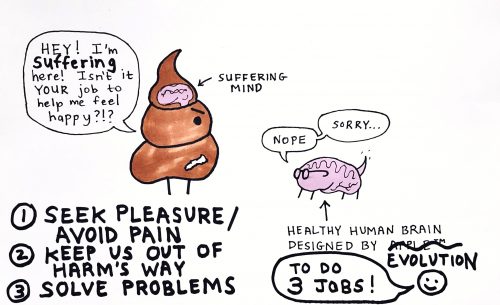
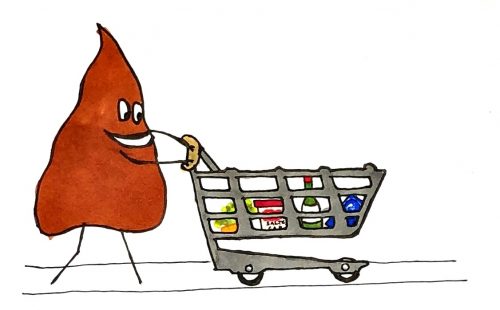 I’m also relieved to have seen and avoided my neighbour – the one I had an argument with with last week who I spotted walking down another aisle. Whew, and another dopamine hit of pleasure!
I’m also relieved to have seen and avoided my neighbour – the one I had an argument with with last week who I spotted walking down another aisle. Whew, and another dopamine hit of pleasure!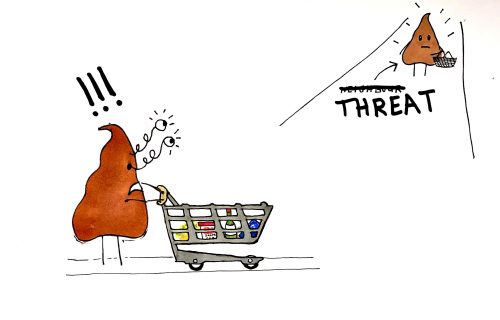 But maybe that evening I eat the whole tub of Hagen Daz as I am wont to do and drink most of the wine and feel sick and full of self-loathing.
But maybe that evening I eat the whole tub of Hagen Daz as I am wont to do and drink most of the wine and feel sick and full of self-loathing.